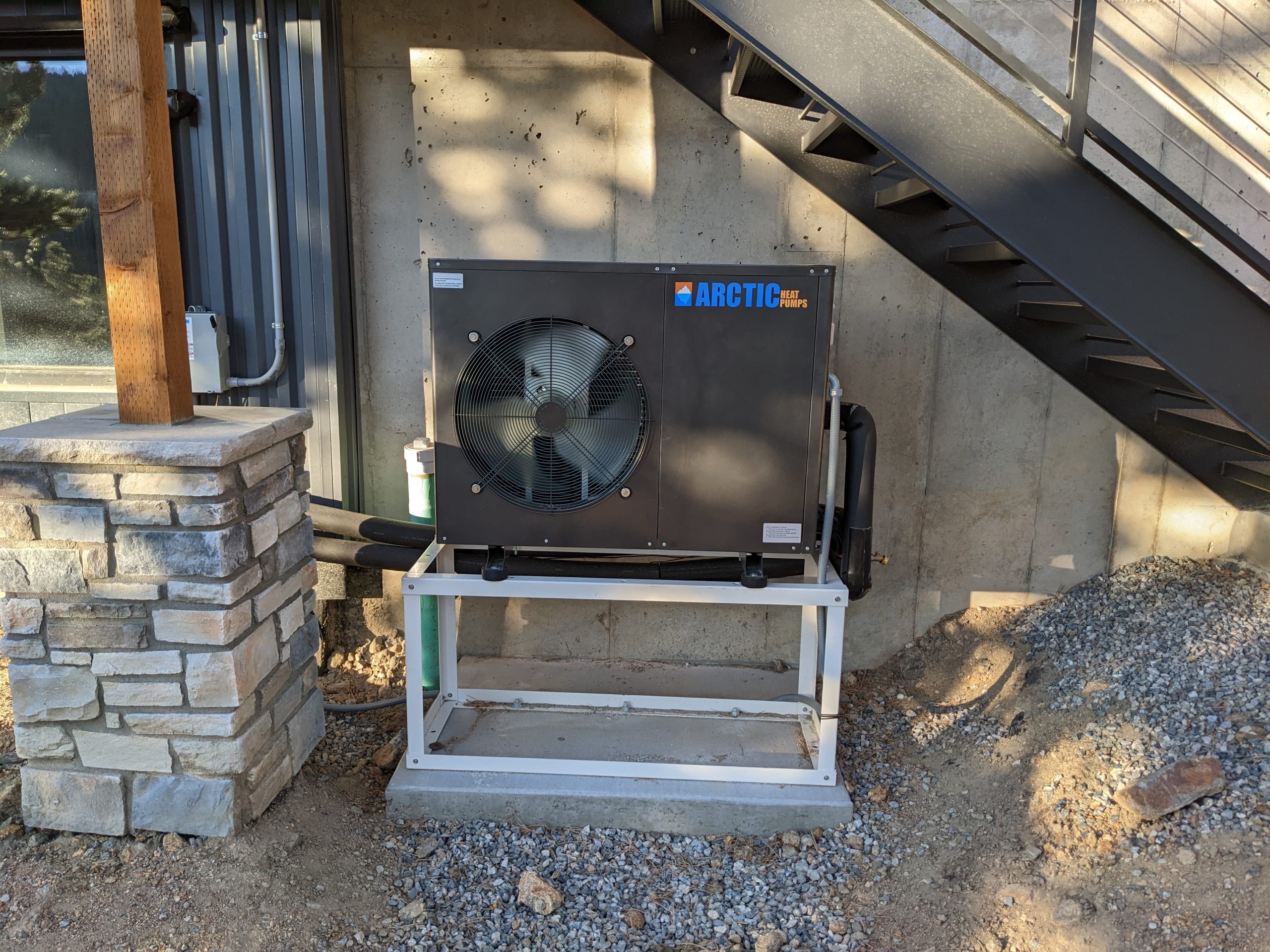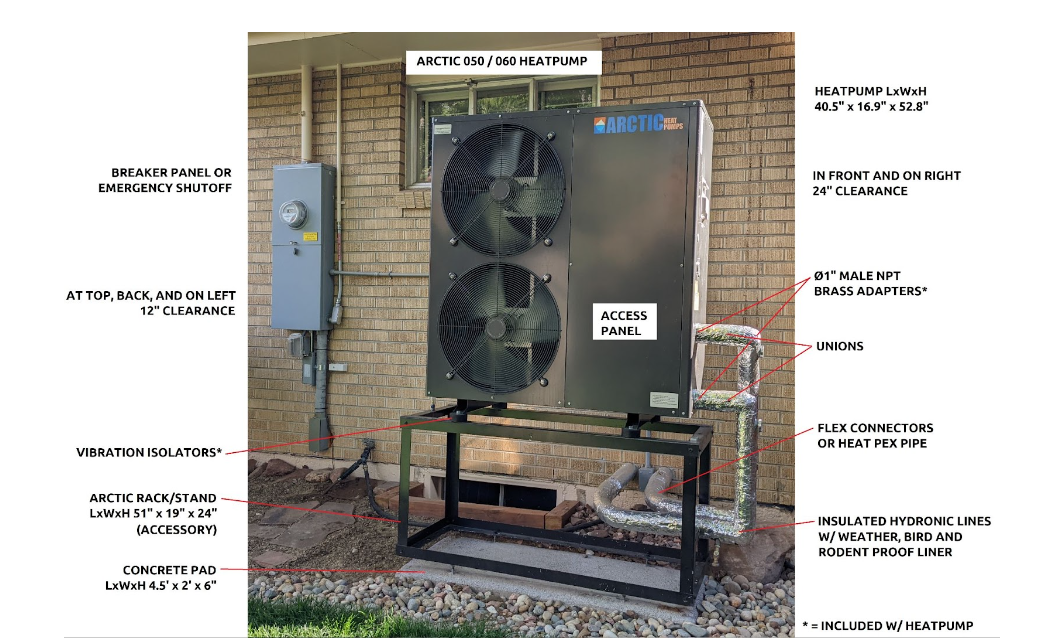
If you follow the news, chances are you’ve seen or heard stories in the past year about how heat pumps are the wave of the future, providing a more sustainable heating and cooling source, helping people electrify their homes, and reducing their reliance on fossil fuels.
If you are looking to decrease energy consumption and lessen your carbon footprint, heat pumps are a very good tool to support you on that journey. How do you get started—and what do you need to know to make the best, most well-informed decisions for your home, your needs, and your budget? Let’s discuss.
Take a systems approach
Whether you are building a new home, renovating an existing home, or upgrading your home’s heating and cooling system, it’s important to remember that a home is a complex system. The whole system should be considered before changing even one component. A home consists of:
- Envelope – This refers to everything in the home that touches the outside including walls, foundation, roof, and windows.
- Occupants – What’s happening inside the house? How many people and pets reside there and what is the behavior of each creature?
- Appliances – Predominantly located in the kitchen, as well as living and entertainment spaces, these items can produce a lot of heat.
- Mechanical systems – The heating, cooling, ventilation, and water heating appliances also play a big role in considerations involving the comfort of your home.
All of these things need to be considered when we are talking about energy efficiency in a home. It makes a big difference if you have a log house, where the wind is blowing through, or if you have a super-insulated house that is airtight with 18-inch walls. To determine the size and type of heat pump required, we need to calculate the actual heating and cooling loads—and for that, we will be looking at all of the elements listed above.
Get to know heat pumps
There are several different types of heating equipment including boilers, which heat water; furnaces, which heat air; stoves, which burn wood or pellets; electric resistance baseboard or heat mats that can be embedded in a slab; all of these pieces of equipment generate heat by consuming a fuel or electricity. Heat pumps by comparison transport (pump) thermal energy (heat) from one side to another. The homeowner can decide in which direction the heat flows and what amount of heat is being moved. Because that thermal energy originates from a renewable source, the heat pump’s operation is considered renewable as well. That’s what makes heat pumps special.
Types of heat pumps
We already have heat pumps in our homes. The refrigerator in our kitchen pumps heat from inside the appliance into the kitchen. That’s why the refrigerator interior gets cold and the back of the refrigerator is warm. Air conditioners are heat pumps. It should come as no surprise that heat pump hot water heaters are also heat pumps that absorb thermal energy from the ambient air around the unit and use it to heat the water inside the tank.
Heat pumps rely on the refrigeration cycle. Heat is absorbed on one side in the evaporator, and rejected on the other side, where the refrigerant condenses. The cycle is reversible, meaning it can be switched around and used for cooling as well.
There are two different types of heat pumps used for home heating and cooling, air-source heat pumps and geo-thermal heat pumps. Air-source heat pumps, which we sell at BrightSense, tap into the ambient air outside, whereas geo-thermal heat pumps are connected to the underground soil and bedrock and absorb thermal energy from there. One of the advantages of air-source heat pumps is that the volume of outside air they tap into is almost infinite. This means that we don’t have to worry about over-extracting our source.
Arctic heat pumps are equipped with a variable speed compressor that in combination with enhanced vapor injection (EVI) technology can be precisely controlled and achieve even higher levels of efficiency including and operate at cold climate conditions.
Heat pump FAQs
How does an air-source heat pump work?
With an air-source heat pump, thermal energy is absorbed from the ambient air. These heat pumps tap into the air outside where the heat pump is located. If you were to stand in front of the unit and have the fan blow towards you, you would notice that the air blowing at you is colder, than the air that is drawn in on the backside. That temperature difference comes from the thermal energy that was extracted by the heat pump and pumped into the house.
What does a heat pump look like and how is it installed?
This is what an air-to-water heat pump looks like when it’s set up on the outside of a building. Since these heat pumps heat and cool water, there are no refrigerant pipes going into the house, as you would have with a split system heat pump. The water pipes connect the heat pump with a buffer tank in the house. This is part of what makes these heat pumps universal as you don’t need any specialty tools or equipment to install them. And the distribution system uses typical in-floor radiant components.
Can heat pumps be used in cold and snowy climates?
Yes. In the snowy climate in Colorado, we’re setting the heat pump on a 24-inch snow stand. We need some clearance around the heat pump to get good airflow. Arctic heat pumps operate down to -15°F—that’s basically as cold as it gets here on the Front Range. At that low temperature, these units can still produce 122°F water.
What does cooling look like?
In cooling, these units can chill water down to about 40°F.
Are heat pumps well-suited for radiant applications?
Yes, radiant is the distribution system of choice for hydronic heat pumps. The 125°F makes the heat pump great with products like Warmboard® or Ecowarm® panels. Those are manufacturers providing products that have the radiant tubes already built in. Staple up can also work under certain circumstances. Hot water baseboard is not a compatible distribution system. Hot water baseboard, as the name says, requires much higher water temperatures of 160°F to 180°F and that’s not a temperature that a heat pump can produce at this stage.
Can heat pumps be used for domestic hot water?
Air-source heat pumps can preheat domestic hot water. However, in heating dominated climates like Colorado and the Rocky Mountain West, domestic hot water generation would compete with space heating and lead to a slow recovery.
What are other heat pump applications?
Fan coils can also be used with the hot or chilled water. In particular for cooling, fan coils function really well and respond fast. Arctic heat pumps are also well-suited for radiant cooling using the existing in-slab piping or with Warmboard or Ecowarm panels. Note that radiant cooling is slow to respond. In highly efficient homes, where cooling is only needed for a few hours during the peak afternoon, hydronic fan coils might be a better choice.
If you are looking for an energy-efficient heating and cooling solution, installing a heat pump could be the answer you are looking for. Contact us if you’d like to learn more.

